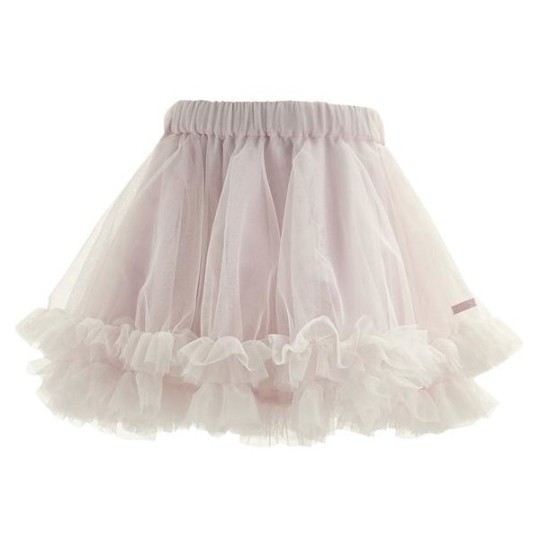#letul
Text

blows them up
#Coloring Ultron is always such a battle why do you have so many shades . stop .#he is trying to make it harder on purpose (I picked out the colors myself)#fanart#oc#ultron#oc art#letul#marvel#aou#marvel movie#avengers#marvel movies#mcu#marvel cinematic universe#marvel art#marvel mcu#the avengers#age of ultron#mcu ultron#marvel ultron#avengers age of ultron#oc x canon#platonic pairing#silly alert#can't believe it's been like two years of this shit#two years ?? maybe threee#fuck I'm so horrible at dates </3
20 notes
·
View notes
Text

M. Letulle - Practice of Autopsies (Paris 1903) illustrated by G. Reign
7K notes
·
View notes
Text
Most dissection involves the careful isolation and removal of individual organs, called the Virchow technique. An alternative more cumbersome technique involves the removal of the entire organ body, called the Letulle technique. This technique allows a body to be sent to a funeral director without waiting for the sometimes time-consuming dissection of individual organs. The Rokitansky method involves an in situ dissection of the organ block, and the technique of Ghon involves dissection of three separate blocks of organs - the thorax and cervical areas, gastrointestinal and abdominal organs, and urogenital organs. Dissection of individual organs involves accessing the area in which the organ is situated, and systematically removing the anatomical connections of that organ to its surroundings. For example, when removing the heart, connects such as the superior vena cava and inferior vena cava are separated. If pathological connections exist, such as a fibrous pericardium, then this may be deliberately dissected along with the organ.
0 notes
Text

M. Letulle, la pratique des autopsies,Paris, Naud ed., 1903. Illustration d’après nature par G. Reignier.
0 notes
Text
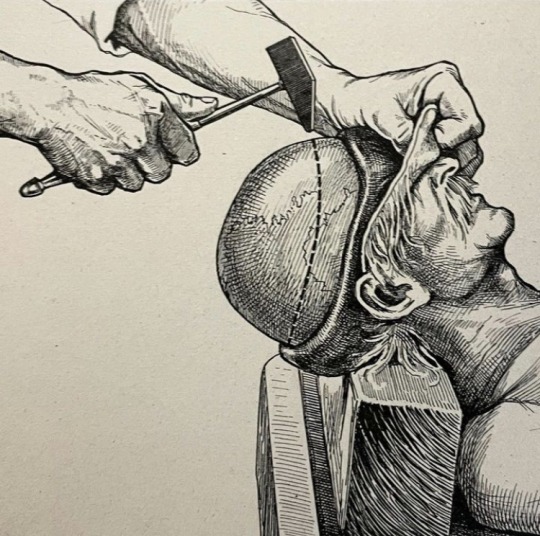
M. Letulle, La pratique des autopsies, Paris, Naud ed., 1903, illustration d’après nature par G. Reignier
Source : librairiehogier on instgram
1 note
·
View note
Photo

THE BEAR RIDE, NATHALIE LETULLE
Calm Bear on the road in Forest edge Wild Animal in total freedom Blue and Green Landscape
https://www.saatchiart.com/art/Painting-THE-BEAR-RIDE/96853/4384993/view
1 note
·
View note
Text
Gayle Letulle Death - Gayle Letulle Has Sadly Passed Away
Gayle Letulle Death – Gayle Letulle Has Sadly Passed Away
Gayle Letulle Death – Obituary, Cause Of Death – Friend. Colleague. Greenie. Today we mourn the loss of two-time Tulane graduate and Athletics Hall of Fame member Gayle Letulle. You will forever be in our hearts.
Our heartfelt condolence to everyone mourning this death. Click link to read more from source
Friend. Colleague. Greenie.
Today we mourn the loss of two-time Tulane graduate and…
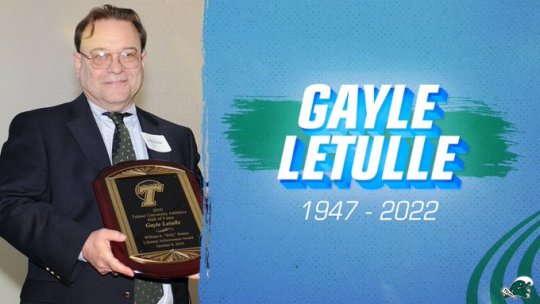
View On WordPress
0 notes
Text
How to write better social media content
How to write better social media content

Luciana Braz talk with Diane Letulle about how to write for social media to create the best posts.
Diane is a professional content writer, the real deal, with best practices for Social Media writing.
Tips on improving writing skills and style for your Social Media posts.
She gave us simple and practical tips how to…
View On WordPress
0 notes
Photo

A young boy recorded on video as he was violently dragged by his mother from a Beaumont elementary school cafeteria and struck several times with a belt outside the school was removed from his home by #ChildProtectiveServices Friday afternoon. Also taken into custody by CPS investigators were four of his siblings, ages ranging from 1 to 12. #ShariPulliam, #CPS spokeswoman, confirmed the removal for the safety of the children, two of whom were at school when the department intervened. Any potential legal action taken against the mother is a law enforcement decision, she added. In the video, which spread across social media Wednesday afternoon, a woman, accompanied by another person recording the incident, entered the #HomerDriveElementary cafeteria, located her child and dragged him outside by his shirt collar. Once in the courtyard, the woman screamed obscenities at the child, forcing him to make an apology to another adult, at which point the woman began striking the child several times with what appears to be a belt, threatening to “break your (expletive) face.” No one interceded during the incident, either inside the cafeteria or outside while the child was being physically and verbally abused. “We are in the process of evaluating this incident to determine the next steps in consequences for the behaviors exhibited,” #Beaumont ISD spokeswoman Hannah LeTulle said in an emailed statement Thursday. “We cannot provide personnel information due to the fact that this is an ongoing investigation.” CPS investigated the video, identified the woman in question and went to her Beaumont home Thursday, Pulliam said. An associate judge on Friday signed the order allowing the removal of the children, said Randi A. King, chief prosecutor in the family law division of the #JeffersonCounty #DistrictAttorney’s Office. King said a hearing in one of the two family law courts will take place either Nov. 19 or Nov. 21 for further disposition. https://m.beaumontenterprise.com/news/article/CPS-removes-kids-from-home-of-mom-filmed-beating-14820734.php #StopWhippingBlackChildren #RaiseYourSkillsNotYourHands https://www.instagram.com/p/B4oi7ogg8Qz/?igshid=nw7demk51rb4
#childprotectiveservices#sharipulliam#cps#homerdriveelementary#beaumont#jeffersoncounty#districtattorney#stopwhippingblackchildren#raiseyourskillsnotyourhands
0 notes
Photo

Marine Letul (France) Grand Prix Thiais 2012 via http://olympic88.tumblr.com/post/171672843349
0 notes
Text
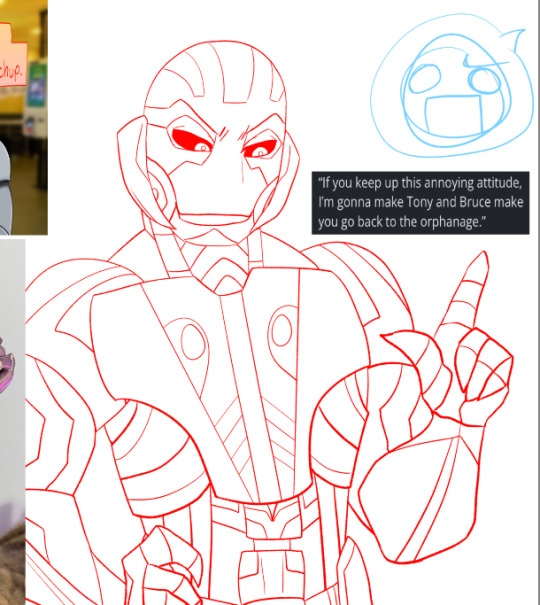
duuuude....
i be......
i be cookin...
#Don't know what happened but one minute he's a sketch and the other minute he's a completely new design#I tooootally fuck with it tho#Sick as hell#Also figured out I can actually put my Ultron figures to use and pose them#Specifically the Movie Revo one#Because he's the most accurate and way more detailed than my other ones#The count is up to eighteen btw#Eighteen chunks of plastic shaped like Ultron#:3#tag time#fanart#oc#ultron#oc art#letul#marvel#aou#age of ultron#marvel ultron#mcu ultron#infinity ultron#marvel characters#avengers#avengers age of ultron#mcu#marvel mcu#marvel cinematic universe#oc x canon#platonic pairing#Godamn site is always forgetting my platonic pairing tag when I try to autofill it
9 notes
·
View notes
Text
New Post has been published on Biology Dictionary
New Post has been published on https://biologydictionary.net/autopsy/
Autopsy
Autopsy Definition
An autopsy is a surgical procedure performed on a corpse after death (a period called, “post-mortem.”). It is typically conducted in an attempt to understand the person’s cause of death. The autopsy will be conducted by a trained physician who has specialized in pathology, as determining the cause of death will require a vast understanding of disease and injury.
A brief history of autopsies will tell us that humans have been performing autopsies since the dawn of time, it seems. There is historical data to support that autopsies were performed in ancient Egyptian times. Ancient Egypt was notably known for performing elaborate death rituals and valuing the afterlife, so it makes sense that an autopsy would be part of that ritual. However, a distinction between those early times and now is that whereas ancient Egyptian examiners were removing organs for preservation, autopsies today are done with the intention to explain disease and death.
The image depicts an old photograph of a Japanese victim of the Jinan Incident who is undergoing an autopsy
Autopsy Method
An autopsy, at its base, is a surgical dissection. There are different correct ways to perform it, but the Letulle method has become the principle protocol for training pathologists. This particular method finds the pathologist or medical student commencing the dissection at the abdomen. After piercing the abdominal area, the abdominal organs will be removed in one block per this method – understandably called the “en bloc” method. The direction the Letulle method will take is called a retroperitoneal approach. This essentially means that the organs will be removed starting with the organs situated directly behind the peritoneum, and moving backward. The peritoneum, in turn, is a serous lining located in the abdominal cavity. It appears like a light colored sheet that will cover and thus protect our abdominal organs. The retroperitoneal organs will include the adrenal glands, the pancreas, the lower segments of the small intestine’s duodenum, and the ascending and descending parts of the colon. The examiner will take out organs by layer, all while using the vasculature (or veins and arteries) as reference points to orient themselves. This method is considered to be best for the pathologist in –training, as it follows anatomical relationships learned in class. However, there are faster ways to perform an autopsy, as well.
The Virchow technique will see that the organs are removed one by one, starting at the cranium and moving down to the thoracic, abdominal, and cervical organs. In other words, it may follow a top-down approach, if you will.
The Rokitansky technique is an in situ (or local) dissection that starts at the neck and trails down, and the organ is removed as a bloc as well. The first cut pierces the larynx to separate the esophagus and pharynx, then the larynx and trachea, followed by the chest organs that are cut to expose those in the abdomen.
Finally, the Ghon technique is similar to the Rokitansky in that the thoracic, cervical, and abdominal organs are removed using the bloc method, but the Ghon will not employ an in situ dissection instead opting for “en bloc” removal.
Types of Autopsy
An autopsy is performed for three main reasons that we will discuss shortly. A clinical autopsy will be done on a patient that has died while under the care of a hospital or clinical staff and in cases where the physicians have failed to identify the cause of a sudden death. This type of autopsy will be useful for attaining the time and cause of death, as well as for giving doctors a cause of death to appropriately file a death certificate.
A forensic autopsy, on the other hand, will be a type of autopsy performed when a corpse has been retrieved from a crime or murder site. This autopsy will reveal any trace of bullets, blows or injuries, and poison in the system. A medical examiner must be present, and will decide if the cause of death was an accident, murder, or suicide. This autopsy will guide police through their investigation.
Lastly, an academic autopsy is one that is performed by medical students to teach them about human anatomy. Likewise, some may be used for research purposes, as well. The source of the bodies will be patients who have willingly donated their bodies to science, or unclaimed bodies after filing the needed legal paperwork.
Importance of Autopsies
While any family, or next of kin, can request an autopsy of their deceased loved one, autopsies are most certainly the golden standard when the cause of death is uncertain. This may take place if a person was found deceased from a possibly accidental circumstance, or if a person was murdered. This clearly has crucial significance in the realm of criminal law, but also within the human experience of grieving and finding closure. For this reason, the autopsy has been performed for legal and medical reasons for a long time.
Quiz
1. Which of the following characterizes the Rokitansky method of autopsy?
A. Start at the abdominal cavity and start removing organs by layer
B. Remove organs employing in situ removal
C. Begin at the cranium and move downward
D. Remove organs employing en bloc removal
Answer to Question #1
B is correct. The Rokitansky method is characterized by the in situ or local dissection that begins at the neck. Unlike many of the other methods, it will not employ en bloc removal. The other choices appropriately describe the other methods of autopsy.
2. Which type of autopsy is one that requires the presence of a medical examiner?
A. Clinical
B. Forensic
C. Academic
D. None of the above
Answer to Question #2
B is correct. A forensic autopsy will absolutely require a medical examiner to be present – it is mandatory by law – whereas a clinical autopsy may be performed by a pathologist. A forensic autopsy, as discussed above, will be used to guide police and build a criminal case.
References
Newsmax Health (2017). “What happens during an Autopsy?” Newsmax. Retrieved on 2017-8-19 from http://www.newsmax.com/Health/Health-Wire/autopsy-death-organs-forensic/2014/04/29/id/568274/
Culora GA, Roche WR (1996). “Simple method for necropsy dissection of the abdominal organs after abdominal surgery.” J Clini Pathol 49(9):776-9.
Forensic Pathology (2017). “Methods/Technique.” NCSSM Forensic Pathology. Retrieved on 2017-08-19 from http://ncssmforensicpathology.weebly.com/methodstechniques.html
0 notes
Text
New Post has been published on Ziarul tau online
Momentul zero în Justiţie. Tudorel Toader a deschis valiza nucleară
Ministrul Justiţiei a prezentat, ieri, pachetul de modificare a legilor Justiţiei, cea mai importantă noutate fiind aceea că preşedintele României nu va mai numi procurorii-şefi ai DNA, DIICOT şi Parchetului General, aşa cum prevede legea în prezent. O altă modificare radicală o reprezintă trecerea Inspecţiei Judiciare de la CSM, în subordinea Ministerului Justiţiei. Preşedintele Klaus Iohannis şi liderii Opoziţiei acuză coaliţia PSD-ALDE că vrea să distrugă independenţa Justiţiei şi să întoarcă lupta anticorupţie în epoca magistraţilor subordonaţi politic.
Aşteptat cu suf letul la gură de Liviu Dragnea & Co., pachetul de modificare a legilor Justiţiei nu conţine niciun fel de propunere privind modificarea Codului penal şi a celui de procedură penală, asta deşi liderii coaliţiei de guvernare au făcut apeluri repetate în acest sens în prima parte a anului. „Nu vorbim astăzi nici despre grațiere, nici despre amnistie, nici despre abuzul în serviciu sau neglijența în serviciu”, a precizat Tudorel Toader înainte de a prezenta reforma Justiţiei. Restartul propus de fostul judecător CCR se referă, practic, la trei legi importante: Legea privind statutul judecătorilor și procurorilor, Legea privind organizarea judiciară şi Legea privind Consiliul Superior al Magistraturii. Jurnalul Naţional vă prezintă cele mai importante modifi c ă r i propuse de m i n i s t r u l Tudorel Toader, cu menţiunea că acestea vor ajunge în Parlament la începutul sesiunii de toamnă şi vor urma traseul legislativ obişnuit:
☛ Preşedintele României va fi eliminat din procedura de numire a procurorilor-şefi ai DNA, DIICOT şi Parchetului General. Dacă reforma Justiţiei va trece de Parlament, acolo unde PSD şi ALDE deţin majoritatea, şefii marilor parchete şi adjuncţii acestora vor fi numiţi de Secţia pentru procurori din cadrul CSM, la propunerea ministrului Justiţiei, dintre procurorii cu o vechime în funcţie de minimum 10 ani. În forma actuală, procurorii-şefi sunt numiţi de preşedintele României, la propunerea ministrului Justiţiei, cu avizul Consiliului Superior al Magistraturii.
☛ Preşedintele României îşi va păstra dreptul de a numi preşedintele Înaltei Curţi de Casaţie şi Justiţie. Şeful Instanţei Supreme nu va mai fi propus însă de plenul CSM, ci de Secţia pentru judecători din cadrul CSM. „Procurorii sunt subordonaţi ierarhic, judecătorii nu. Procurorii se bucură de stabilitate, judecătorii se bucură de inamovibilitate”, a explicat ministrul Justiţiei.
☛ Inspecţia Judiciară va trece de la Consiliul Superior al Magistraturii, garantul independenţei Justiţiei, în subordinea Ministerului Justiţiei, adică a factorului politic. „În multe ţări, Inspecţia Judiciară este la minister, respectând independenţa pe care o are. Să nu fie dependentă de CSM”, şi-a motivat Toader propunerea.
☛ Mandatele funcţiilor de conducere, atât pentru judecători, cât şi pentru procurori, vor creşte de la 3 ani, cât prevede legea actuală, la 4 ani. Mandatele în curs nu vor fi afectate de această modificare, ceea ce înseamnă că dacă reforma lui Tudorel Toader va fi adoptată de Parlament, şefa DNA Laura Codruţa Kovesi şi procurorul general Augustin Lazăr nu vor beneficia de prelungirea cu un an a mandatelor.
☛ Magistraţii vor fi anchetaţi de o nouă direcţie care va fi înfiinţată în cadrul Ministerului Public, separat de DNA şi DIICOT. Potrivit lui Toader, această Direcţie specializată va avea „competenţa exclusivă de efectuare a urmăririi penale pentru faptele reclamate a fi fost comise de către magistraţi”. Ministrul Justiţiei a anunţat că Direcţia care va ancheta magistraţii va fi formată dintr-un corp de 20 de procurori, „ca o garanţie pentru independenţa judecătorilor”. Practic, magistraţii corupţi vor scăpa de anchetele DNA.
☛ În legătură cu răspunderea magistraţilor, se menţine principiul constituţional potrivit căruia statul răspunde patrimonial pentru prejudiciile cauzate de erorile judiciare. Asta pentru că „puterea judecătoarescă se exercită în numele statului și atunci statul preia răspunderea”, a explicat Tudorel Toader. Noutatea este aceea că judecătorii sau procurorii care au săvârşit o eroare, din rea-credință sau gravă neglijență, vor răspunde în solidar cu statul, potrivit proiectului de lege. Astfel, după ce prejudiciul va fi acoperit de stat, în baza unei hotărâri irevocabile, „statul se îndreaptă cu acțiune de despăgubire împotriva judecătorului sau procurorului care a săvârșit eroarea cauzacauzatoare de prejudiciu”. Cu alte cuvinte, statul va fi obligat să se îndrepte împotriva magistratului care a comis eroarea, faţă de actuala prevedere opţională potrivit căreia statul „se poate îndrepta”.
☛ Procurorul ierarhic superior va putea infirma soluţiile adoptate de procurorii din subordine nu numai pe chestiuni de legalitate, ci și pe fond. În prezent, actele procurorilor de caz pot fi infirmate numai pentru motive de legalitate, nu se intră pe fond.
☛ O altă modificare radicală vizează admiterea la Institutul Naţional al Magistraturii. Tudorel Toader a propus ca la INM candidaţii să aibă minimum 30 de ani şi cel puţin 5 ani experienţă într-o funcţie juridică. În prezent, absolvenţii unei Facultăţi de Drept pot candida pentru admiterea în INM imediat după terminarea studiilor.
☛ Ministrul Justiţiei a propus totodată majorarea vechimii necesare pentru promovarea în funcțiile de judecător sau procuror. Astfel, va fi nevoie de 8 ani de activitate efectivă pentru a promova în funcția de procuror la DIICOT sau DNA; 10 ani vechime efectivă pentru a ajunge judecător la Curtea de Apel/ procuror la Parchetul de pe lângă Curtea de Apel; 15 ani vechime efectivă pentru a ajunge procuror la Parchetul de pe lângă ICCJ; 18 ani vechime efectivă pentru a promova judecător la Înalta Curte de Casație și Justiție; 7 ani de activitate efectivă ca judecător pentru a promova la Tribunal sau la Tribunalul specializat; 7 ani de activitate efectivă, la procurori, pentru a ajunge la Parchetul de pe lângă Tribunal sau Parchetul de pe lângă Tribunalul specializat.
„Justiția se va întoarce în timp”
Preşedintele Klaus Iohannis a desfiinţat reforma propusă de ministrul Justiţiei. „Propunerile prezentate (…) se constituie într-un atac asupra statului de drept, independenței și bunei funcționări a Justiției, precum și împotriva luptei anticorupție”, a transmis Iohannis. Şeful statului a explicat că rapoartele MCV şi recomandările Comisiei de la Veneția „îl indică pe ministrul Justiției drept elementul prin care se realizează influența politicului” în procedura de numire a procurorilor-şefi, în condiţiile în care MJ a propus eliminarea preşedintelui din această procedură. „Dacă acest amalgam de măsuri va fi asumat de Guvern și aprobat de Parlament, eforturile României de mai bine de 10 ani vor fi anulate și Justiția se va întoarce în timp, într-o epocă în care era subordonată politicului”, a reacţionat Iohannis.
Procurorii se revoltă
Parchetul General condus de Augustin Lazăr a luat act „cu suprindere şi îngrijorare” de modificările anunţate şi a transmis, într-un comunicat, că procurorii nu au fost consultaţi în prealabil. Ministerul Public a criticat trecerea Inspecţiei Judiciare în subordinea ministrului Justiţiei – numit politic, precizând că, „în ceea ce priveşte procurorii, Inspecţia Judiciară a fost cel mult în subordinea procurorului general, niciodată sub tutela ministrului Justiţiei”. PG a reclamat şi crearea unei direcţii specializate pentru cercetarea magistraţilor, considerând că înfiinţarea acestei direcţii se sugerează că „problema corupţiei se află în corpul magistraţilor şi nu în exterior, aceasta fiind singura categorie profesională din România pentru care ar urma să se creeze o asemenea structură”, a acuzat Parchetul.
Alte propuneri importante:
? Se elimină posibilitatea reîncadrării în funcţia de judecător sau procuror, după pensionare, cu avizul CSM.
● Se va elimină posibilitatea menţinerii drepturilor locative ale magistraţilor după pensionare. Practic, dacă propunerea lui Toader va trece de Parlament, magistraţii vor fi obligaţi să îşi părăsească locuinţele de serviciu după ieşirea la pensie.
● Se elimină posibilitatea menţinerii în funcţie a magistraţilor condamnaţi pentru vătămare corporală gravă.
● Se menţine posibilitatea ca un procuror să treacă în funcția de judecător și invers, cu aprobarea CSM, însă doar la nivel de Judecătorie, respectiv Parchet de pe lângă Judecătorie.
● Membrii CSM trebuie să se suspende din magistratură.
● Se va elimina plata pentru magistraţii care au un grad superior. De exemplu: un judecător/ procuror cu grad de Curte de Apel, dar care activează la o Judecătorie/Parchet de pe lângă Judecătorie, va fi plătit pentru activitatea efectivă, nu pentru gradul superior deţinut.
Sursa articol jurnalul.ro
, sursa articol https://blogville.ro/momentul-zero-in-justitie-tudorel-toader-a-deschis-valiza-nucleara/
0 notes
Link
Ruokatoimittajana saan kokeilla ja käyttää monenlaisia raaka-aineita kun kehittelen reseptejä. Se on tietysti hauskaa. Mutta siinä on myös eräs pulma: jääkaappini on jatkuvasti turkasen täynnä erilaisia pakkauksia ja purnukoita, joiden sisällöistä on käytetty vain osa. Toiset konmarittavat kokonaisia asuntoja, minä olen tyytyväinen saadessani jääkaappini tolkulliseen kuntoon.
Vaikeaa jääkaapin siivoaminen on siksi, että tunnen suurta syyllisyyttä ruokahävikistä. Yritän aina keksiä jotakin käyttöä purkkien lopuille ja erilaisille kelmuun käärityille nökäreille, joita jääkaapistani löytyy.
Eräänä kertana pyörittelin käsissäni punajuuripurkin loppua. Siitä syntyivät punajuuriletut, joiden joukossa oli sinihomejuustoa. Kuivakaapista kaadoin joukkoon vielä jauhopussin loput – silloin jauhoina taisivat olla grahamjauhot, tällä kertaa sopiva jämämäärä jauhoja oli spelttijauhopaketissa.
Punajuuri ja sinihomejuusto sopivat makuina hyvin yhteen; tätä lettuyhdistelmää olen suosinut jo vuosia. Sinihomejuusto kärähtää kuitenkin helposti, kun se osuu paistinpannuun, joten letun paistaminen on hieman haastavaa jos pinnalla on sinihomejuustoa. Oheiseen kuvaan tein letut niin, että ripottelin pinnalle homejuustomuruja – ja lettujen väristäkin näkee, että käytin hyvin mietoa lämpöä, jotta sain letut kypsiksi mutta en polttanut juustoa.
Helpompi tapa yhdistää nämä maut on kuitenkin se, että paistaa punajuurista lettuja ja tarjoaa ne sinihomejuustokastikkeen kera. (Reseptin vinkkinä on tuo haastavampikin tapa.)
Punajuuriletut
14–16 pientä lettua
valmistusaika 50 min
100 g kokonaisia punajuuria mausteliemessä (2 pienehköä)
1 pieni sipuli (esimerkiksi salottisipuli)
2 kananmunaa
1 tlk kermaviiliä
1½ dl spelttijauhoja (tai tavallisia vehnäjauhoja)
½ tl suolaa
mustapippuria myllystä
(ripaus timjamia)
1 rkl rypsiöljyä tai voisulaa
Paistamiseen:
voita
Kastike:
½ tlk kermaviiliä
50 g sinihomejuustoa
suolaa
mustapippuria myllystä
Laita punajuuri valumaan hetkeksi talouspaperin päälle. Kuori sipuli.
Raasta punajuuri ja kuorittu sipuli. Sekoita raasteet kulhossa kananmunien ja kermaviilin kanssa.
Lisää jauhot, sekoita taas. Mausta seos suolalla ja mustapippurilla. (Laita joukkoon myös ripaus timjamia, jos pidät timjamin mausta.)
Lorauta joukkoon öljy. Jätä taikina pöydälle turpoamaan 20 minuutiksi.
Sulata lettupannun koloissa pieni nokare voita ja nosta kauhalla koloon taikinaa. Kokeile ensin yhdellä letulla, jotta saat säädettyä lietesi lämmön oikealle tasolle.
Paista letut keskilämmöllä. Käännä punajuuriletut vasta, kun ne ovat hyytyneet myös yläpinnalta.
Käännä hyytyneet letut ja paista lyhemmän aikaa toiselta puolelta. Kääri lettulautasen päälle folio ja anna tekeytyä paistamisen jälkeen noin 10 minuuttia.
Sekoita sillä välin kastikkeen ainekset. Tarjoa letut sinihomejuustokastikkeen ja vaikkapa kuskusin tai salaatin kera.
Vinkki: Jos aiot paistaa lettujen joukkoon sinihomejuustoa (sopiva määrä on noin 50 g), laita taikinaan vain ¼ tl suolaa. Ripottele juusto letulle, kun lettu on pannulla: laita muutama nokare juustoa letun yläpinnalle. Käännä lettu vasta, kun yläpinta on hyytynyt. Se on erityisen tärkeää silloin, jos pinnalla on sinihomejuustoa. Letun juustopuolta ei nimittäin voi paistaa kovin kauan aikaa, muutoin juusto herkästi kärähtää.
0 notes
Photo
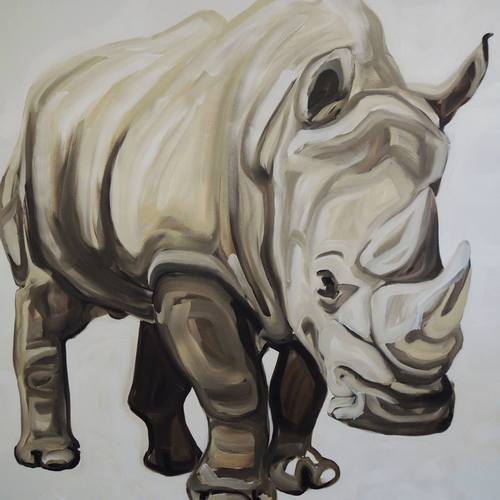
WHITE RHINO, NATHALIE LETULLE
White Rhinoceros Endangered Wild Animal African Rhinoceros Rhinoceros horn Wide rhinoceros, calm, safe, placid attitude
https://www.saatchiart.com/art/Painting-WHITE-RHINO/96853/4287075/view
1 note
·
View note
